Many people want to create coziness in their home with their own hands. This is possible - just sew bed linen. Many needlewomen face difficulties when starting to work on such a task. How to sew bed linen? It will not be difficult if you follow a certain algorithm of actions - choose the right fabric and threads, calculate the consumption of materials and choose basic patterns.
Tips for choosing materials
The quality and duration of use of bed linen directly depends on the fabric chosen for sewing. When searching, it is worth considering the following nuances:
- The composition of textiles should be as natural as possible.
- The most suitable options for a bed linen set are cotton, linen, and silk.
- You can also use derivative variations of weaving natural cotton threads - satin or calico, cambric, chintz and others.
- The fabric should not fade during washing.
- Textiles should be pleasant to the touch.
- Depending on the parameters with which the kit should be obtained, the required width of the canvas is selected.

Additional information! Natural fabrics with their natural properties are best suited. They are environmentally friendly and provide favorable conditions for the body and organism.
Next, you need to pay attention to the individual characteristics of each type of material. In this case, it is worth considering the advantages and disadvantages of the most common options:
- Cotton is considered a traditional material for sewing bed linen. It has unique natural properties - it allows air to pass through, is hygroscopic, does not cause allergic reactions, and is pleasant to the touch. It can be used for a long time, cotton is easy to care for.
- Calico is also often used to make bed linen. The usual cross-weaving of threads makes calico durable and soft. It does not lose its external properties for a long time if the fabric is properly cared for. Calico absorbs moisture well and lets air through, and has a huge variety of colors.
- Batiste can be used as a "decoration" rather than a practical product. Ideal for receiving dear guests, as a gift. Airy, light fabric, pleasant to the touch, not suitable for everyday use, as the fabric is not durable enough.
- Satin has a second beautiful name - "Egyptian cotton". An elegant, durable base with a matte sheen is valued. The cost of such textiles is quite high, but the quality is also first class. Satin is considered an alternative to natural silk, therefore it has all the qualities of the presented material. The structure of the canvas is uniform both at the top and bottom, which makes the canvas quite beautiful.
- Natural silk is a sign of luxury and wealth. The product belongs to the "elite" category, so this item is expensive. The best option is Japanese silk. The fabric is pleasant to the touch, has a uniform shine, and allows moisture and air to pass through. Requires special care.
There are still many alternative types of textiles that are derivatives of a cotton or linen base with admixtures of synthetic fibers. For example, torn terry has become very popular lately. It is used for sewing elements of winter bed linen.

The choice should be made based on your capabilities and skills. There are fabrics that are difficult to work with - you need sewing machine skills or special equipment. Sometimes you even need an awl to stitch some fabrics.
Threads for bed linen
To ensure that the accessories are neat and do not deform the fabric, you need to use suitable threads. To make the right choice, you should pay attention to the following features:
- Choose the right color scheme to match the tone of the material.
- You need to buy quality fibers
- It is worth choosing a thread in accordance with the thickness and type of fabric.
Manufacturers offer a wide range of durable and reliable threads. But the following are especially good for bed linen:
- smooth 100% polyester thread;
- professional high-strength polystrong;
- Multi-purpose thread - fits perfectly and is not felt in the hand.
In order to choose the right match "material-thread", during the purchase process it is worth paying attention to the marking. LH - for flax and cotton. LL - a combination of flax and lavsan. And the numbers next to the capital letters indicate the thickness of the fiber. Therefore, sewing material should be chosen carefully and thoroughly.
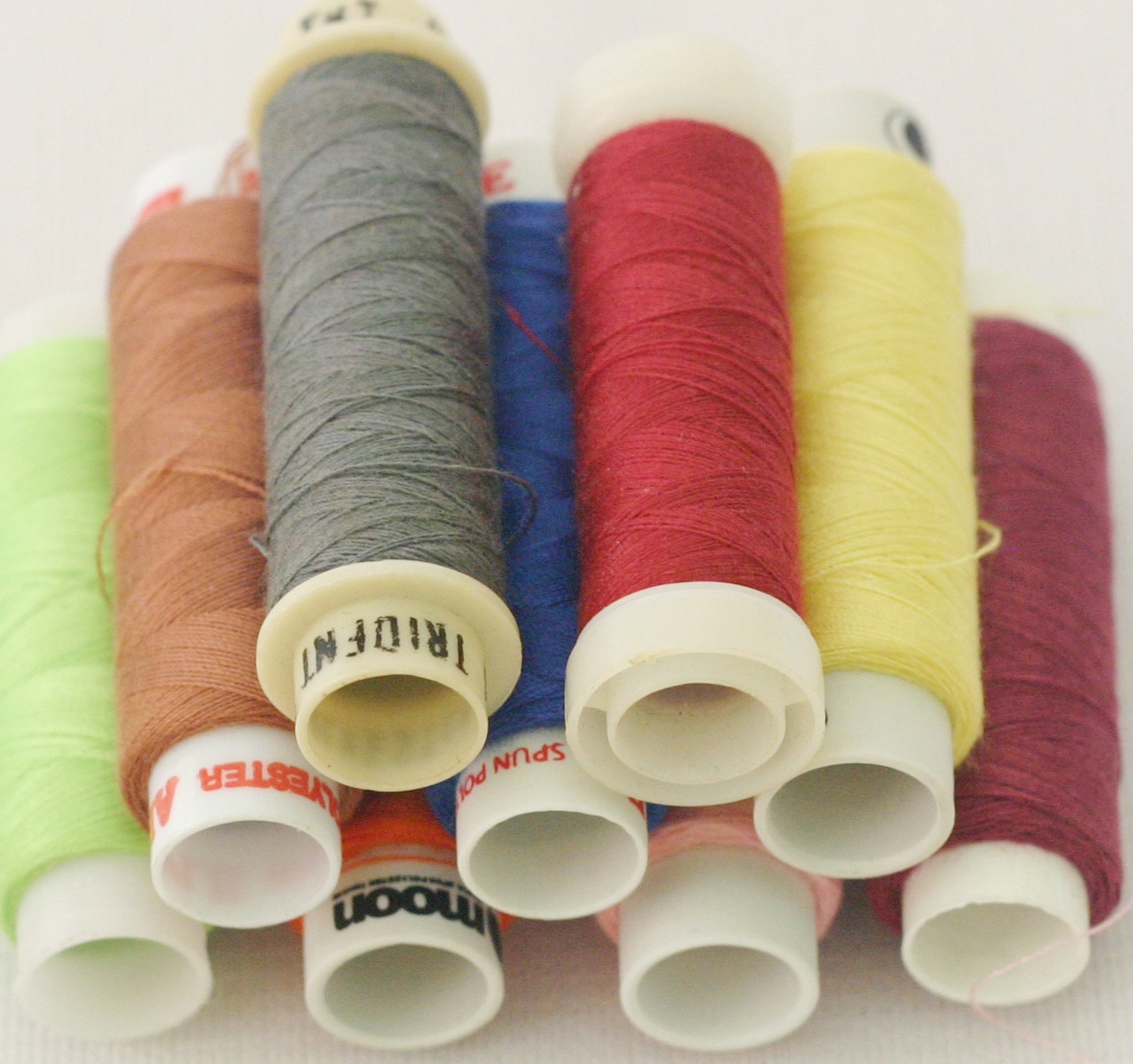
Synthetic threads are marked "100% polyester". They are superior to natural types in the quality of fiber twist and do not "fuzz". Even a non-professional can distinguish bad fibers from good ones. The method of recognition consists of one point - a high-quality thread is even and stretches smoothly.
Standard Size Chart
To start sewing bed linen, you need to know exactly what type of set the items are being made for. Therefore, the size of each item of bedding is initially determined. The easiest way is to use a standard table:

If you take a baby cot as a basis, then the parameters of the future set should be determined individually. To do this, you need to take measurements from the mattress, pillow and blanket, since there are no standards for sizes and shapes here.
How to calculate the amount of fabric
In order not to make a mistake with the amount of fabric, it is worth making the most accurate calculations. This is especially true if sewing bed linen is a small home business. First of all, you need to decide on the parameters of all bed linen parts. Additionally, it is worth considering the shape of the mattress, pillow and blanket. The width of the fabric is important. If it is 1.5 m, then all products will be sewn. With a width of 2.2 or 2.4 m, all parts of the products will be solid.
The width of each seam and hem should be 1.5 cm, and overlock is excluded. It is also better to exclude underwear seams - it is difficult, time-consuming, and they come out very thick. The shrinkage percentage can be calculated: you need to take a piece of fabric 1 m by 1 m and wash it in the same way as you will wash underwear in the future; after washing, drying and ironing, see how much the piece has shrunk. The shrinkage percentage is calculated by proportion:
- previous length - 100%;
- new length - X%;
- Shrinkage = 100 - (new length * 100 / old length).
For example, 1 m of textile was taken, after washing it turned out to be 90 cm, shrinkage = 100 - (90*100/100) = 10%. This calculation scheme is mandatory when using alternative types of fabric for sewing. In order for the pattern to be correct and without a shortage/excess of fabric, you can use the following table:
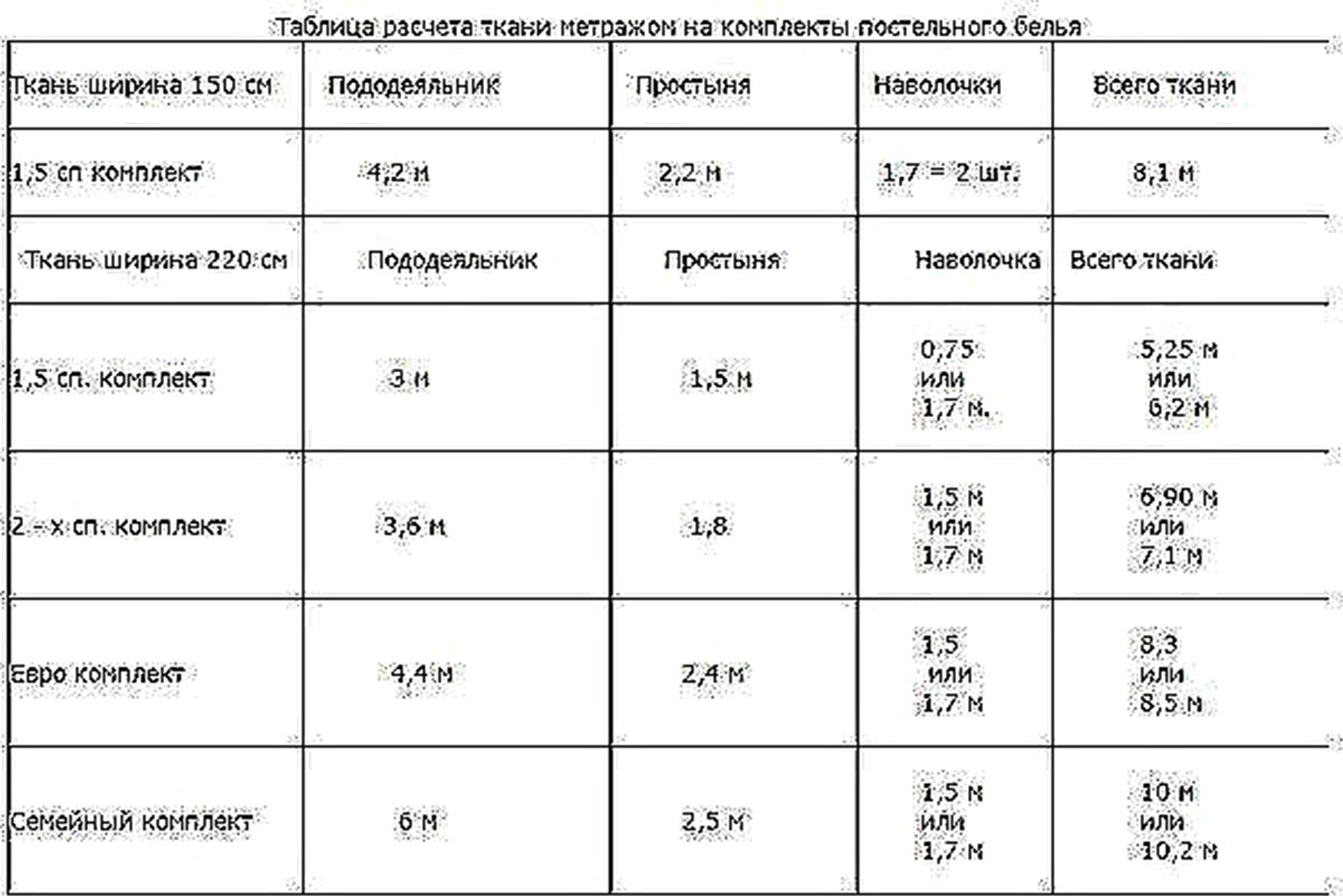
It is necessary to take into account all the features of the selected fabric and shape. It is advisable to initially create a sketch.
Sewing a bed sheet
The simplest in terms of cutting and sewing is a bed sheet. First, you need to make a pattern. This procedure can be carried out in accordance with the following algorithm:
- The sheet should be cut to the full width of the fabric. The length is calculated using the formula: mattress length + 20 cm for hemming. Then add a few centimeters for shrinkage and + 4 cm for seam allowance.
- Measure the required length and width from the canvas, which must be separated from the roll using sharp scissors.
- Remove any threads that have separated from the main part at the cuts.
Please note! If the pattern is made for the entire width of the fabric, then there is an edge on both sides. These sides do not need to be processed - the edge will not unravel.
Description of the process of sewing a bed sheet:
- The edges need to be folded back by 1 cm and ironed to create a kind of fixation.
- Fold again by 1 cm and iron again.
- Sew with a linen stitch on a sewing machine.
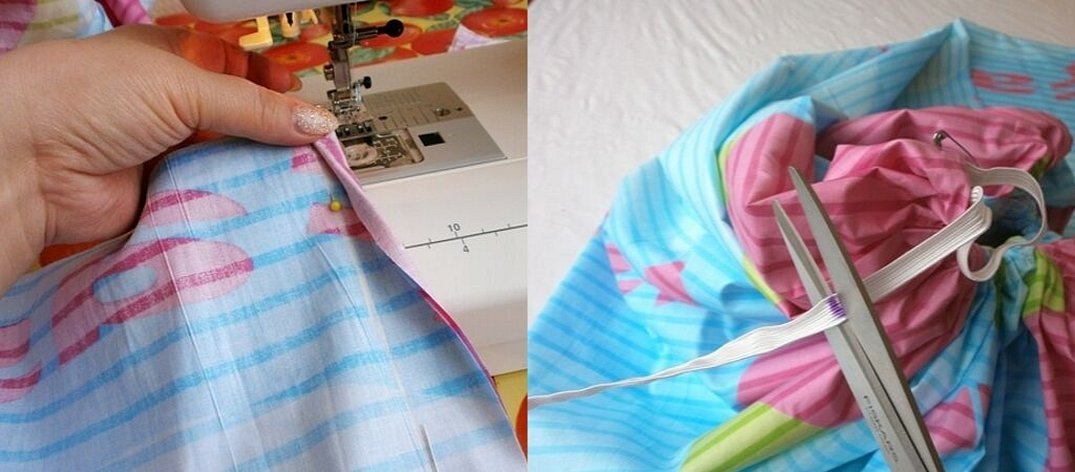
If the sheet should be too wide and a 1.5 m wide sheet is used additionally, then the seam should be formed exactly in the middle. In this case, it is better to make an overlay of elements, which is then stitched.
Recently, sheets with elastic bands have become very popular. This option allows you to fix the product well on the mattress and significantly saves on material. At the same time, the pattern and manufacturing principle are not complicated in comparison with the standard version of the item.
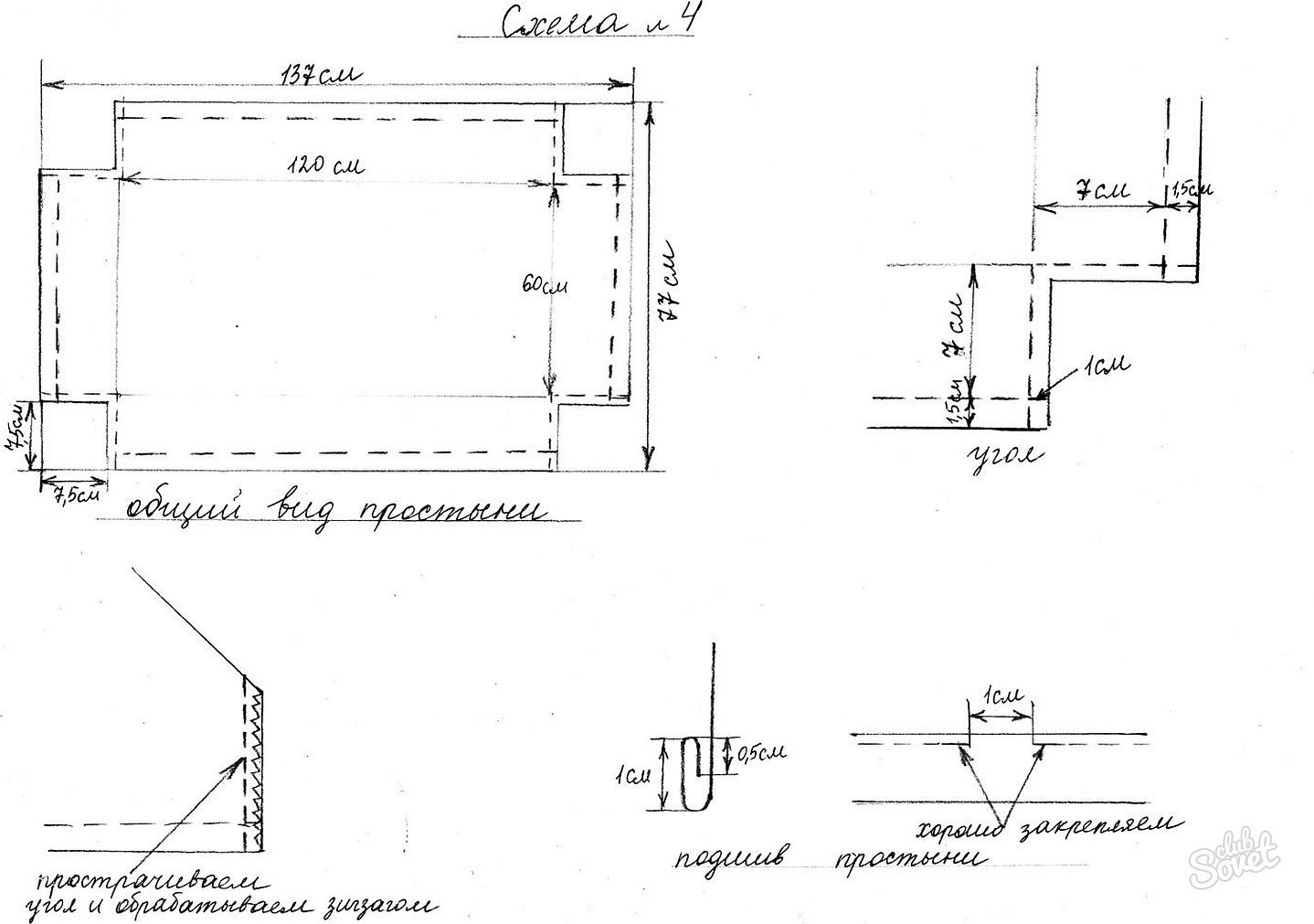
Using this pattern, you can easily sew a fitted sheet cover for any type of mattress.
Duvet cover
A duvet cover is considered the most difficult item of bed linen in terms of cutting and sewing. Often problems arise due to the huge size of the pattern and an unsuccessfully selected model of the product. First, you need to determine where the hole for the blanket will be located, and then determine the parameters and make a pattern.
In modern bed linen, it is common to completely hide the blanket in the duvet cover, so the hole is usually made on the side. Some models suggest placing the hole in the middle of one of the panels. There is the simplest option for sewing this element of bed linen. This model has the code name "envelope".
How to sew a duvet cover-envelope using an elementary pattern will become clear from the diagram itself:
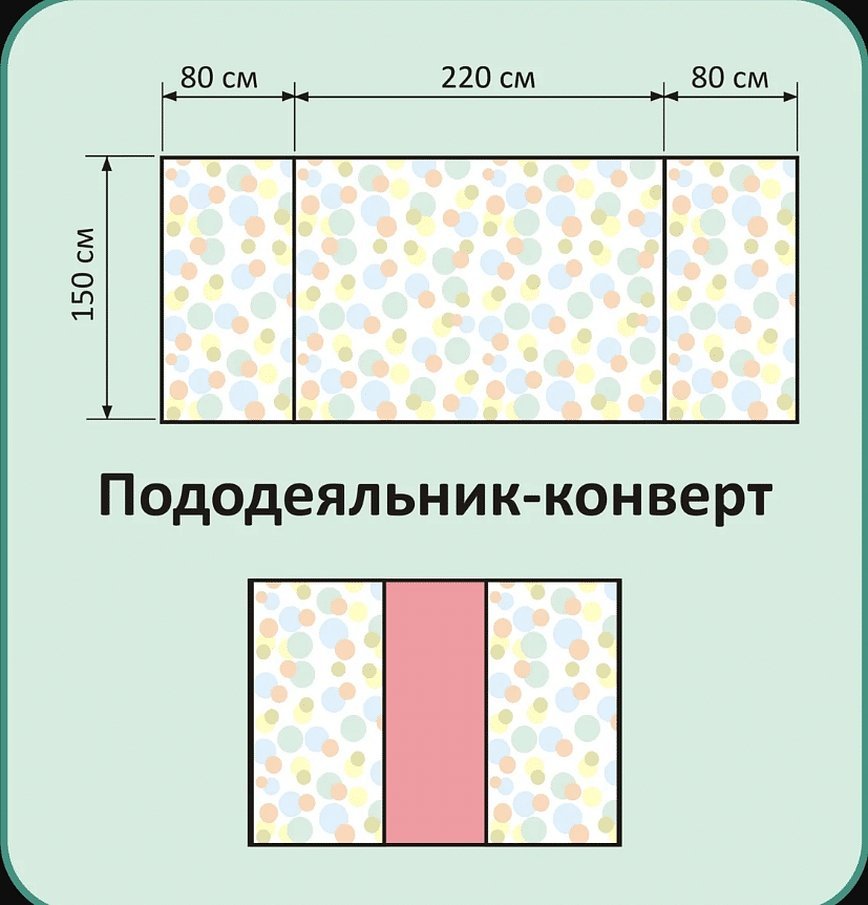
Important! All cuts that will fall on the part where the front and back parts of the product are sewn together must first be processed with an overlock.
The gap (not sewn) through which the blanket will be pushed is marked in pink. All cuts and seams are formed according to the same principle as when sewing a sheet. To practice creating such a complex element of bed linen, you can sew a small duvet cover for a doll, and then proceed to large-scale work.
Pillowcase
Many needlewomen have already encountered sewing pillowcases in school during labor lessons. The sewing principle is distinguished by elementary actions and preparation of a whole pattern with a wrap. Usually the sketch looked exactly like this:
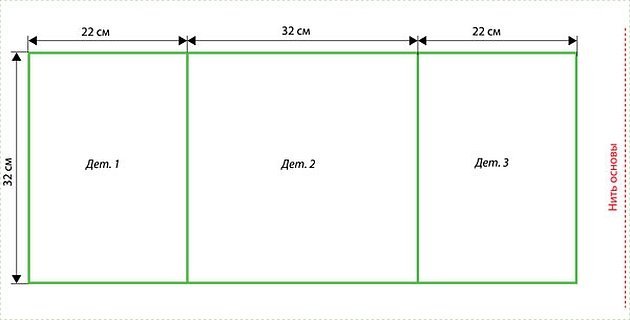
The pillow was placed in the "pocket" of the pillowcase and fixed inside with the help of an overlay in the form of a strip of fabric, the so-called wrap. But there are also more modern versions of sewing pillowcases, where the place for threading the pillow can be hidden and located in different parts of the product, for example, on the side.
Master class on sewing a pillowcase with a hidden hole for a pillow:
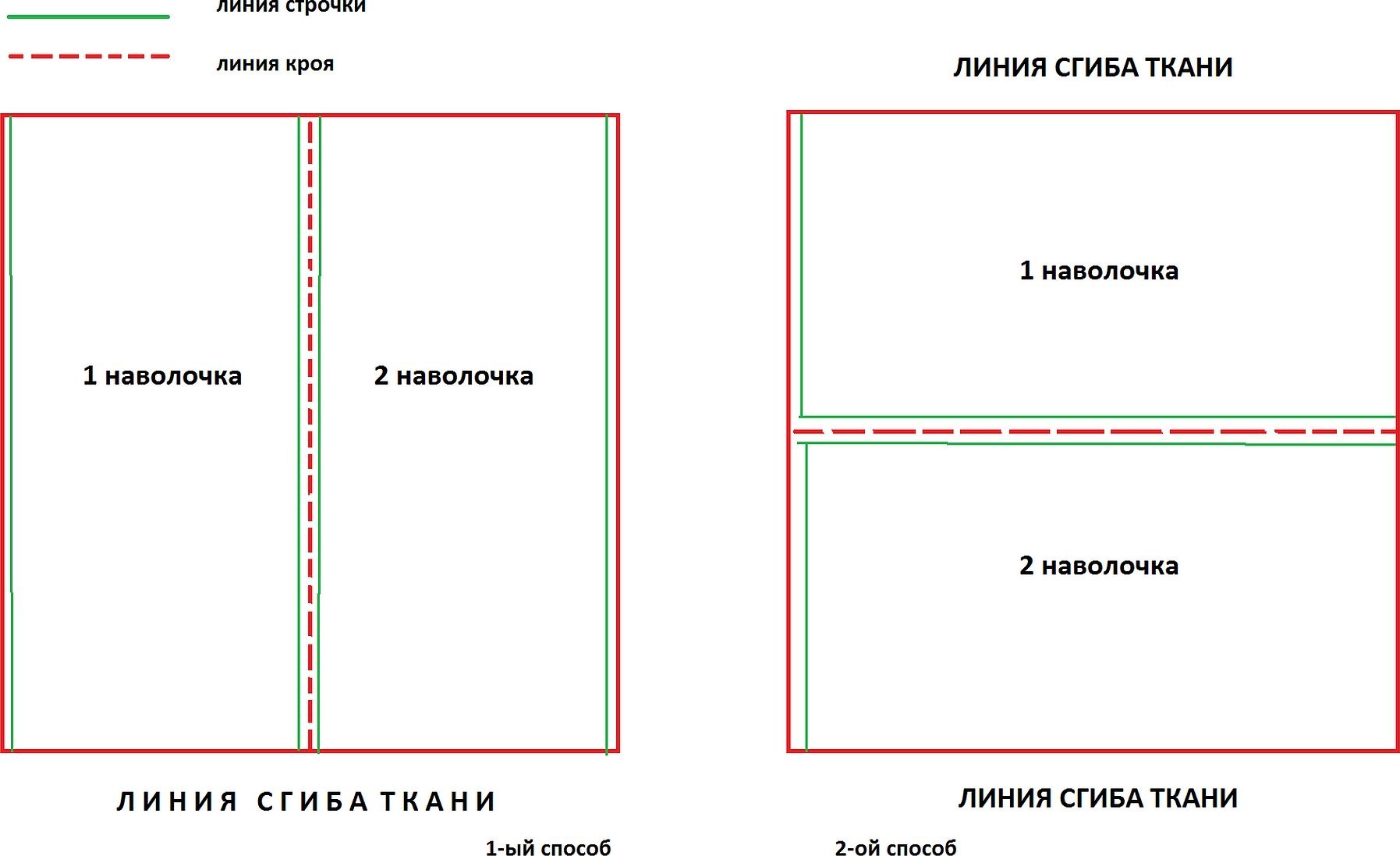
- Lay the fabric on a flat surface.
- Transfer the measurements onto the canvas that will correspond to the dimensions of the pillow.
- You need to form 2 parts that will be identical to the shapes and sizes of the pillow. Don't forget about the seam allowance (+4 cm).
- Overlock all cuts.
- Place the pieces face-to-face and sew together using a linen stitch.
- The procedure is performed on 3 sides. The fourth will become an opening for the pillow. Here you can sew in a zipper or sew on buttons.
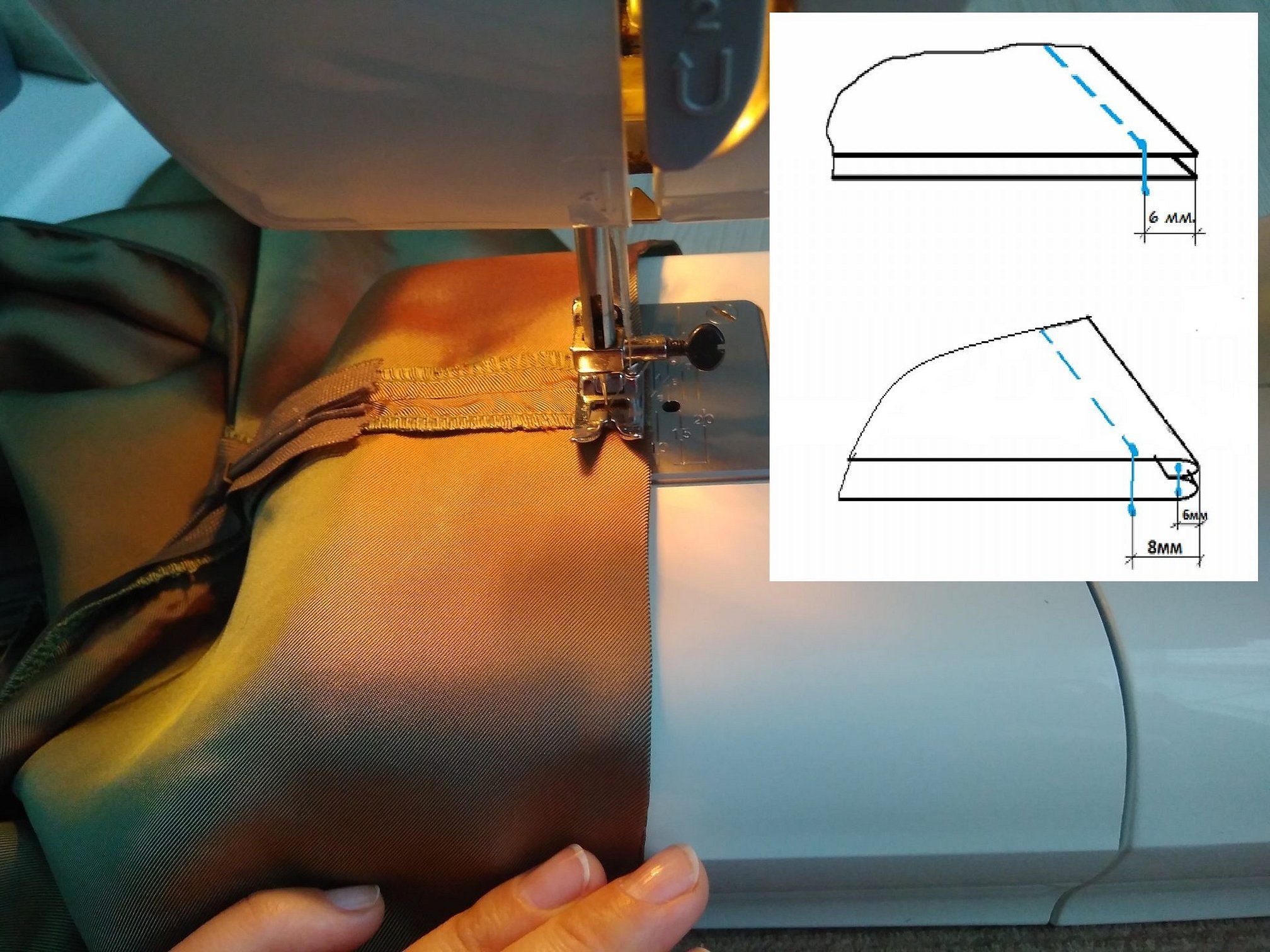
Additionally, you can decorate the pillowcase with ruffles along the perimeter of all the side seams. You need to prepare 4 strips of fabric. The width is determined arbitrarily, and the length corresponds to the sides of the pillow +20 cm. Overlock all the cuts on the strips. Using safety pins, attach the strips with the overlay in some places to one of the pillowcase parts. Sew the part.
Benefits of DIY Sewing
Hand-made things have always been highly valued not only from a moral point of view, but also from a monetary point of view. It is not for nothing that people used to queue up to see good seamstresses to make this or that thing to order. Sewing bed linen has many positive aspects:
- You can choose fabric of any color and quality. Several textile options can be combined within one product.
- If necessary, you can sew items with non-standard shapes and sizes that you definitely won’t be able to buy in a store.
- The quality of stitching and seams will differ from the factory version of the work - here you can use different techniques.
- The design of bed linen can combine different models that would definitely not be included in one factory set.
- Making your own can save you money that you would otherwise have to pay for packaging and selling the product to the retailer.
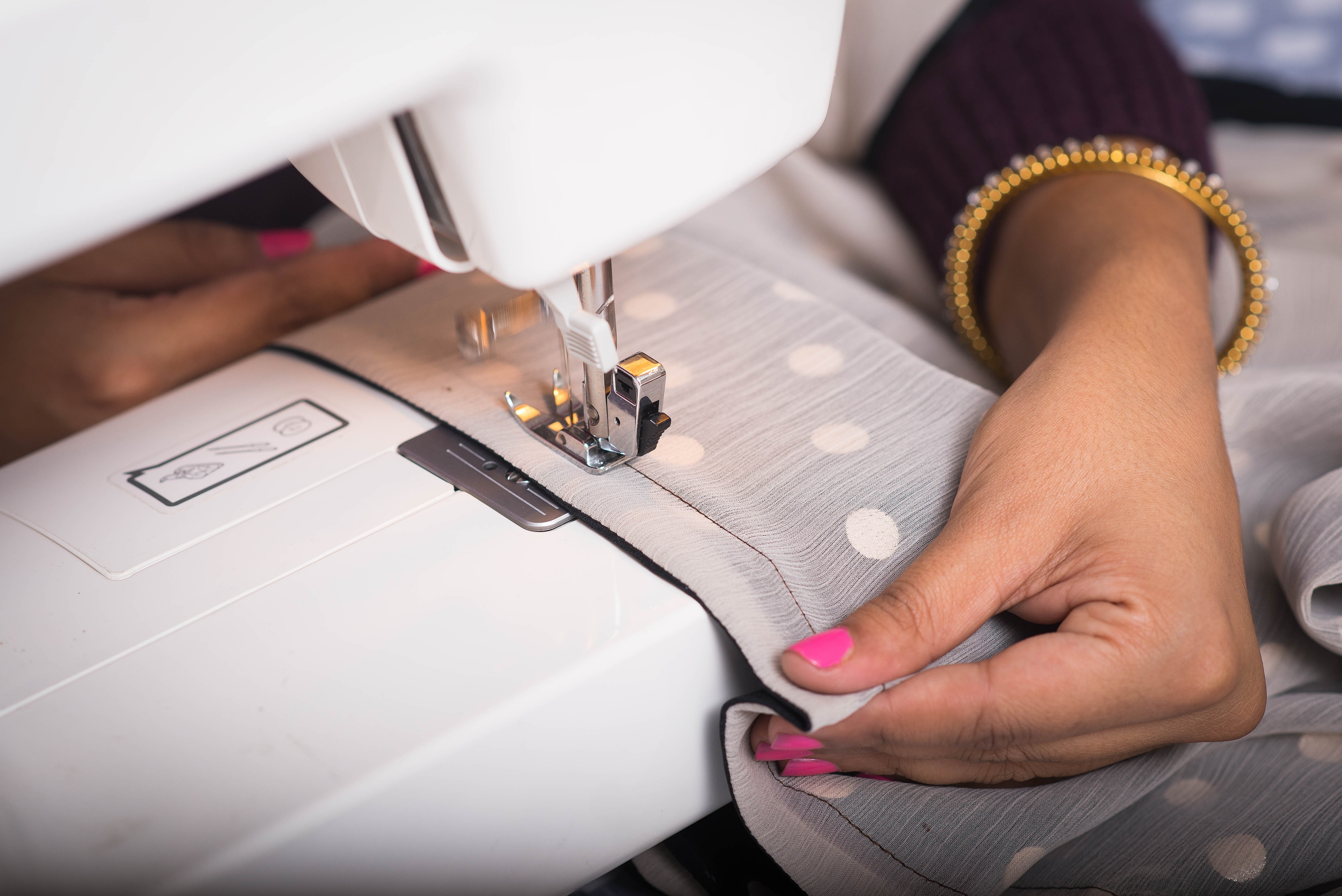
In addition, such an activity can become a home business for housewives or a useful hobby for avid needlewomen. In any case, the house will always have a new and neat bed thanks to self-sewn linen.

Bed linen made by hand will differ from factory items in quality, appearance, individual approach in terms of models and colors. To start working, you must first select the fabric and accessories in the right quantity. Then create patterns for each element of the set and sew them correctly. In the future, you should only take into account the rules for caring for the type of fabric in order to maintain the perfect appearance of the products for a long time.




